
Physiotherapy exercises are effective for lower back pain, offering tailored routines to enhance core strength, improve flexibility, and promote proper posture. Consistent practice can naturally alleviate discomfort and prevent recurrence.
Understanding the Importance of Physiotherapy for Lower Back Pain
Physiotherapy plays a crucial role in managing lower back pain by addressing its root causes, such as muscle imbalances, poor posture, and limited mobility. It focuses on strengthening core muscles, improving flexibility, and enhancing spinal stability, which collectively reduce pain and prevent future episodes. Unlike passive treatments, physiotherapy empowers individuals with active strategies to regain control over their bodies. Regular exercises tailored by physiotherapists not only alleviate discomfort but also promote long-term recovery. This non-invasive approach is cost-effective and adaptable to various needs, making it a cornerstone of lower back pain management for individuals of all ages and fitness levels.
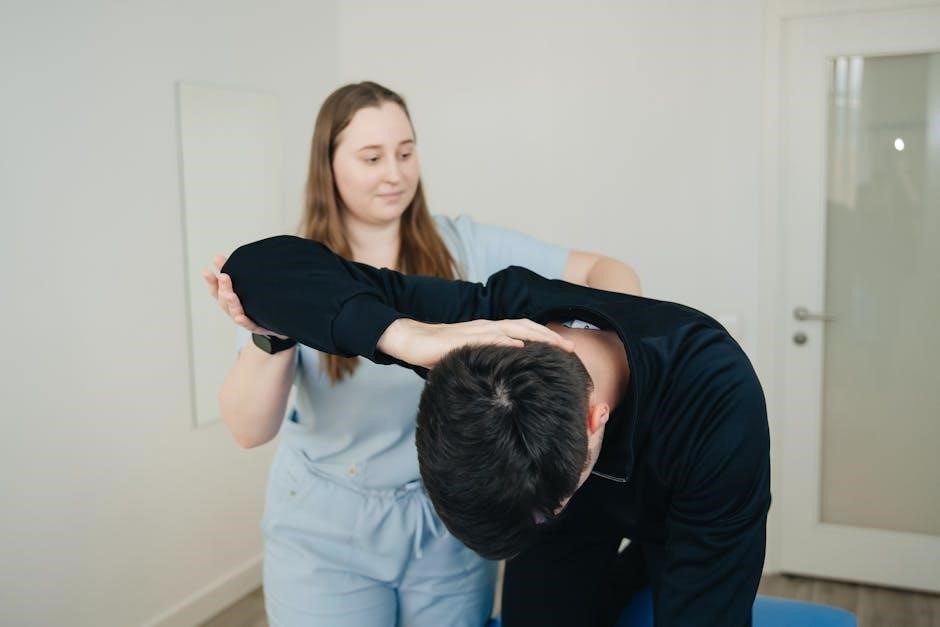
Common Causes and Risk Factors of Lower Back Pain
Lower back pain often stems from poor posture, muscle imbalances, sedentary lifestyles, and repetitive strain. Age, obesity, and weak core muscles also increase the risk of developing it.
How Poor Posture and Muscle Imbalances Contribute to Lower Back Pain
Poor posture, such as slouching or slumping, places unnecessary strain on the lower back muscles and spine, leading to discomfort and pain. Muscle imbalances, where some muscles are overactive and others are weak, disrupt the body’s natural alignment. For example, tight hamstrings or hip flexors can pull the pelvis out of position, while weak core muscles fail to provide adequate spinal support. Over time, these issues can lead to chronic lower back pain. Addressing these through targeted exercises is essential for long-term relief and prevention.
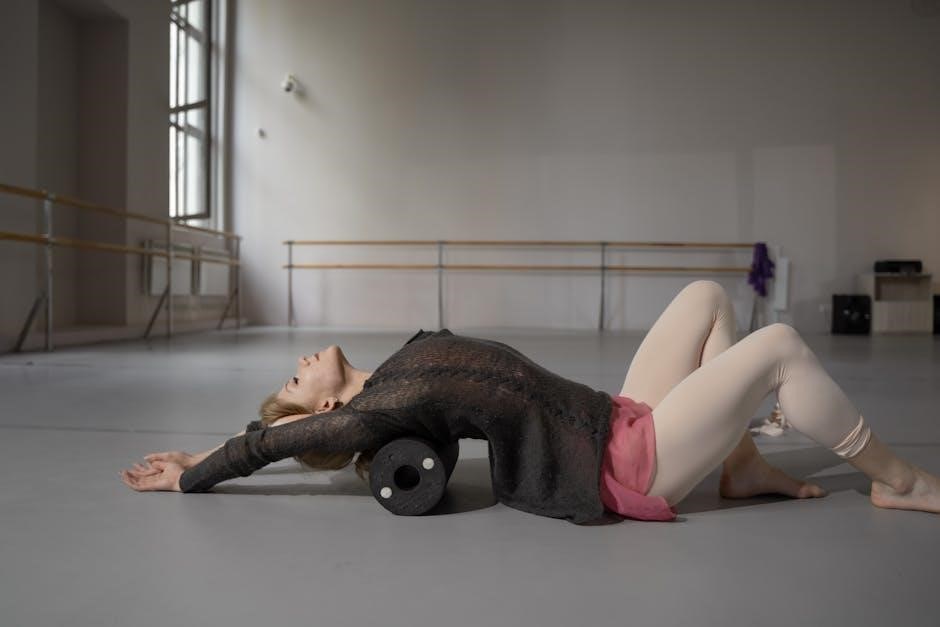
Core and Back Strengthening Exercises
Strengthening the core and back muscles is essential for stabilizing the spine, improving posture, and reducing lower back pain. These exercises help build resilience and promote healing.
Plank Exercise for Core Stability
The plank is a highly effective exercise for improving core stability, essential for reducing lower back pain. It strengthens the abdominals, obliques, and lower back muscles, enhancing spinal support. To perform a plank, start in a push-up position with hands under shoulders and toes on the ground. Engage the core, keeping the body straight from head to heels. Hold for 20-30 seconds, breathing naturally, and repeat 3-4 times. Proper form is crucial to avoid strain. Regular planking improves posture and reduces lower back strain, making it a cornerstone of physiotherapy routines for back pain relief and prevention.
Bridging with Straight Leg Raise for Lower Back Strength
Bridging with a straight leg raise is an excellent exercise for strengthening the lower back and glutes. Lie on your back with knees bent and feet flat on the floor. Slowly lift your hips toward the ceiling, squeezing your glutes and maintaining a straight line from shoulders to knees. As you bridge, extend one leg straight while keeping the other bent. Hold for 2-3 seconds before lowering. Repeat on the other side. This exercise targets the muscles stabilizing the spine, improving posture and reducing pain. Perform 3 sets of 10-12 repetitions on each side for optimal results.
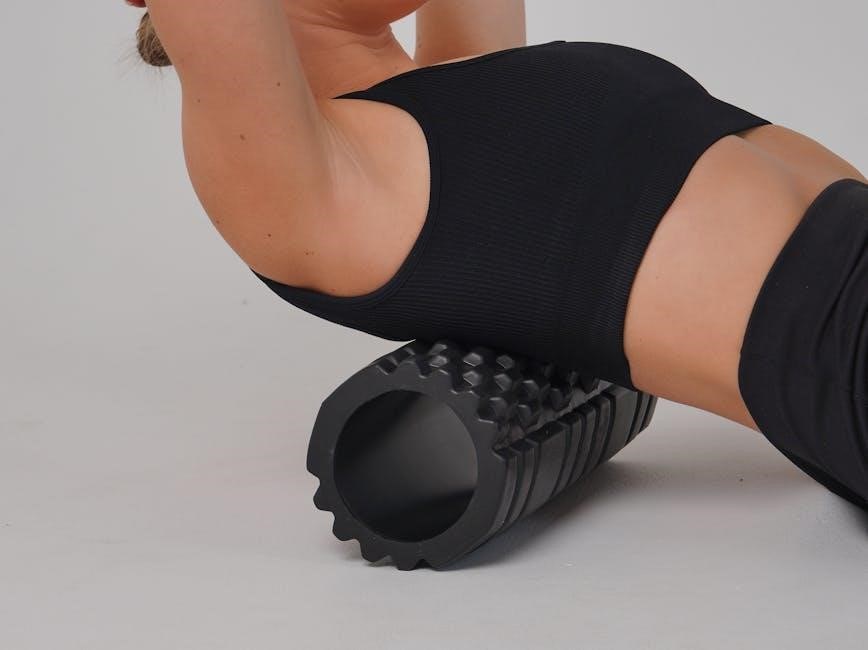
Flexibility and Stretching Exercises
Improved flexibility reduces stiffness and enhances spinal mobility, crucial for alleviating lower back pain. Gentle stretches like the Cat-Cow and Knee to Chest promote relaxation and relief.
Cat-Cow Stretch for Spinal Mobility
The Cat-Cow stretch is a gentle exercise that improves spinal flexibility and relieves lower back tension. Start on your hands and knees, with your spine in a neutral position. Inhale as you arch your back, lifting your head and tailbone (Cow pose). Exhale as you round your spine, tucking your chin and pelvis (Cat pose). Repeat for 10-15 repetitions. This exercise promotes spinal mobility, reduces stiffness, and enhances posture. It’s ideal for those with mild lower back pain or as part of a daily routine to maintain spinal health and prevent discomfort.
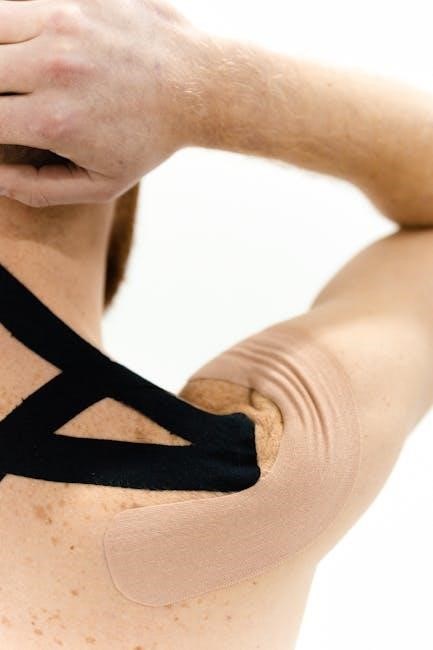
Knee to Chest Stretch for Hip and Lower Back Flexibility
The Knee to Chest Stretch targets the hips and lower back, improving flexibility and relieving tension. Lie on your back, bring one knee toward your chest, and hold with your hands. Gently press your knee toward your chest, holding for 20-30 seconds. Repeat on the other side. This stretch helps reduce stiffness in the hip flexors and lower back muscles, which often contribute to discomfort. It’s particularly beneficial for individuals with sedentary lifestyles or poor posture. Perform 2-3 repetitions on each side for optimal results. Deep breathing during the stretch can enhance relaxation and effectiveness.
Pilates-Based Exercises for Lower Back Pain
Pilates-based exercises focus on core engagement and spinal stability, effectively addressing lower back pain. They involve isometric contractions of abdominal, pelvic floor, and gluteal muscles, improving posture and strength.
The Hundred and Roll-Up Exercises in Pilates for Core Engagement
The Hundred and Roll-Up are foundational Pilates exercises designed to enhance core engagement and spinal stability. The Hundred involves deep breathing while holding a modified plank position, engaging the abdominal muscles to support the lower back. The Roll-Up targets the entire abdominal wall, improving flexibility and posture. Both exercises strengthen the transverse abdominis muscle, crucial for spinal stability. Regular practice can reduce lower back pain by improving muscle balance and promoting proper movement patterns. These exercises are often recommended in physiotherapy programs for their effectiveness in addressing chronic lower back pain and enhancing overall core strength.

Creating a Daily Routine for Lower Back Pain Relief
A consistent daily routine combining strengthening, stretching, and low-impact aerobic exercises can significantly reduce lower back pain. Start slowly and gradually progress to more intense activities.
Sample Exercise Routine for Managing Lower Back Pain
A daily routine for lower back pain relief should include a mix of strengthening, stretching, and low-impact exercises. Start with gentle movements like the Cat-Cow stretch to improve spinal mobility. Follow with core-strengthening exercises such as planks or bridging to stabilize the lower back. Incorporate stretches like the Knee to Chest stretch to target tight hip and back muscles. Gradually add strengthening exercises like bird dogs or pelvic tilts to improve posture and reduce pain. Aim for 20-30 minutes per session, adjusting intensity based on comfort and progression. Consistency is key to achieving long-term relief.
Preventing Future Episodes of Lower Back Pain
Preventing lower back pain involves maintaining core strength, good posture, and regular exercise. Incorporate activities that promote flexibility and avoid prolonged sitting to reduce strain on the spine.
Strengthening Exercises Like Bird Dogs and Pelvic Tilts
Strengthening exercises such as Bird Dogs and Pelvic Tilts are essential for improving core stability and reducing lower back pain. The Bird Dog exercise targets the transverse abdominis and multifidus muscles, enhancing spinal stability and balance. Start on hands and knees, extend one arm and the opposite leg, and hold for 5 breaths. Pelvic Tilts focus on the pelvic floor and lower abdominal muscles, improving flexibility and reducing stiffness. Lie on your back, tilt your pelvis upward, and hold for 5 seconds. These exercises, when performed regularly, strengthen the muscles that support the spine, preventing future episodes of lower back pain and improving overall posture. Consistency is key to long-term relief.
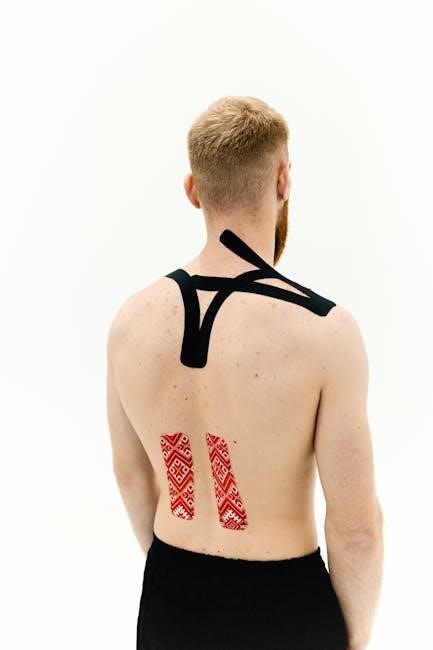
Real-Life Success Stories and Case Studies
Many individuals have experienced significant relief from lower back pain through targeted physiotherapy exercises. Case studies highlight dramatic improvements in mobility and reduced discomfort.
How Physiotherapy Exercises Transformed Lives
Physiotherapy exercises have profoundly impacted individuals with lower back pain, offering lasting relief and improved mobility. Many patients report significant reduction in pain and enhanced quality of life. Through tailored routines like bridging, planks, and cat-cow stretches, individuals regained strength and flexibility. Consistent practice empowered them to manage discomfort independently, reducing reliance on medication. These exercises not only alleviated pain but also restored confidence, enabling people to resume daily activities and enjoy a pain-free lifestyle. Real stories highlight how physiotherapy transformed lives, proving its effectiveness in overcoming chronic back pain and promoting long-term well-being.
Physiotherapy exercises offer effective, long-term relief for lower back pain, empowering individuals to regain strength, mobility, and confidence. Consistent practice fosters a healthier, pain-free lifestyle.
Key Takeaways and Encouragement to Continue Physiotherapy Exercises
Physiotherapy exercises empower individuals to manage lower back pain effectively, fostering long-term relief and improved quality of life. Consistency is key to strengthening core muscles, enhancing flexibility, and maintaining proper posture. These exercises not only alleviate discomfort but also prevent future episodes, promoting a healthier lifestyle. Encouraging regular practice and adherence to personalized routines can lead to significant progress. With dedication and professional guidance, individuals can overcome lower back pain and enjoy renewed energy and mobility in their daily lives.